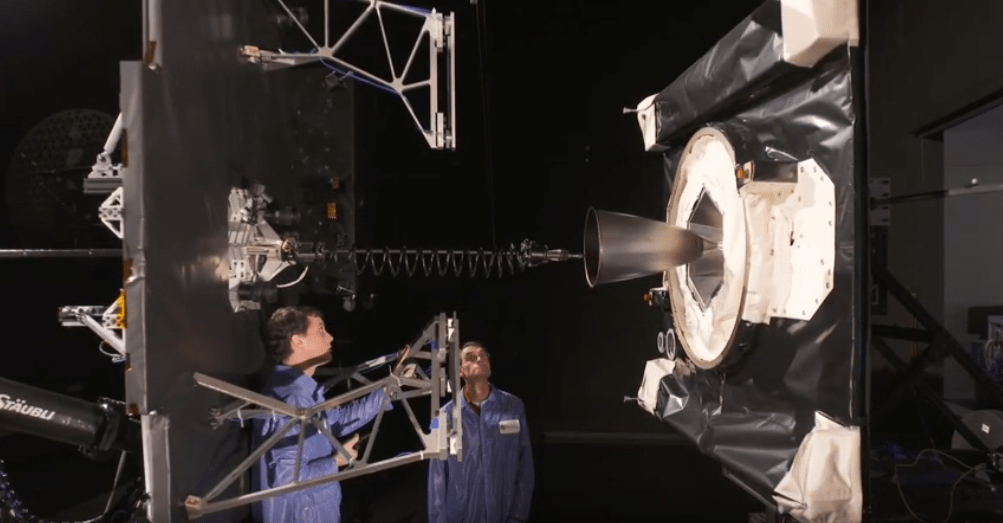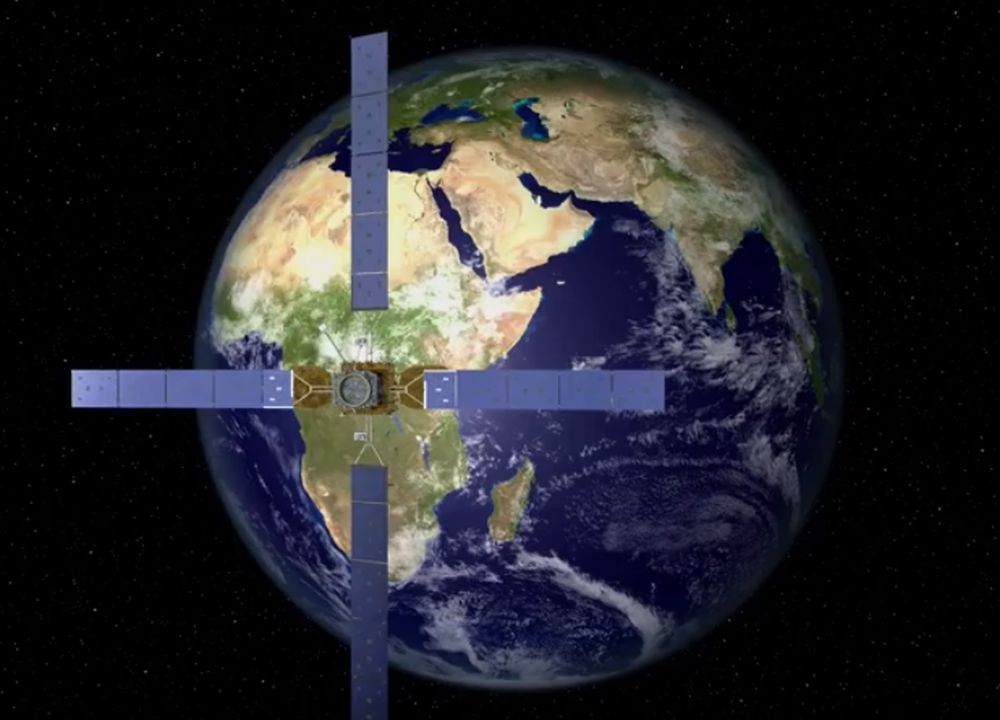Space Logistics LLC, a subsidiary of Northrop Grumman, has launched a satellite that can extend the life of other satellites. The satellite is called MEV-1, or Mission Extension Vehicle-1. MEV-1 is the first of its kind.
MEV-1 was launched on a Russian Proton rocket from the Baikonur Cosmodrome in Kazakhstan on October 9th. It’s going to rendezvous with Intelsat-901 (IS-901) a communications satellite launched in 2001 that is almost out of fuel. MEV-1 will dock with Intelsat-901, fire its thrusters, and boost the communication satellite’s orbit, extending its life by about five years.
MEV-1 has the capability to extend satellite life by 15 years, so once it’s spent five years attached to IS-901, it can, in theory at least, un-dock from the communications satellite and dock with another satellite, extending that one’s operational life. MEV-1 is basically a space tug, but only for geosynchronous satellites.

Northrop-Grumman says that MEV-1 has the capability to dock with about 80% of the geosynchronous satellites in use right now. MEV-1 has a 15 year design life, but depending on the details of its deployment, it has enough fuel to last longer than that. In the case of what they call an “average” 2000 kg (4400 lbs.) satellite, its fuel will last longer than 15 years.
MEV-1 should lower costs for satellite operators and give them mission flexibility. Not only can it extend the life of a satellite by keeping it in its orbit, it can re-deploy a satellite into a new geosynchronous orbit, possibly opening up new markets. And with the ability to dock with multiple satellites, a group of companies could cost-share an MEV-1 mission.
After separation from launch, MEV-1 will take about three months to raise its orbit, then adjust its orbit to match Intelsat-901. Before docking, MEV-1 will circumnavigate the target satellite and inspect it as it positions itself for final approach. Once it receives the command, MEV-1 will dock autonomously with IS-901.
Once docked, the two satellites are basically a new spacecraft, or a new “stack” as they call it. Operators will test the function of the new stack before firing thrusters and re-positioning the Intelsat.
After 5 years, MEV-1 will relocate IS-901 to the GEO graveyard, an orbit that’s a few hundred kilometers above geostationary orbit. Putting dead satellites in the graveyard orbit reduces the chance of a collision producing dangerous debris. Then MEV-1 can undock from IS-901 and move on to its next client.
MEV-1 is the first satellite-servicing spacecraft, but it won’t be the last. Other companies are developing similar technologies. A company called Orbit Fab has partnered with Northrop-Grumman and other to build satellites that can re-fuel other satellites. They’ve already launched on and are working on other designs. Since Orbit Fab’s refuelling satellites are not much larger than a tank of propellant, they should lower the cost of keeping working satellites in space longer. Orbit Fab was also the first private company to supply water to the ISS, something that paved the way for their refuelling satellites.
Then there’s Archinaut.
Archinaut is a project from Made in Space. Archinaut will be able to actually assemble and build structures in space, including antennae, solar arrays, even space telescopes and other complex structures. Made in Space just received a $73 million dollar contract to explore 3-d printing a small spacecraft in orbit.
More:
- Northrop-Grumman: MEV-1 Factsheet
- Orbit Fab: Gas Stations in Space
- Made in Space: Project Archinaut

